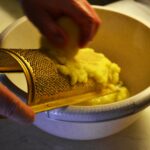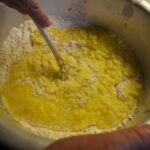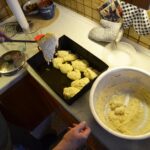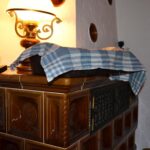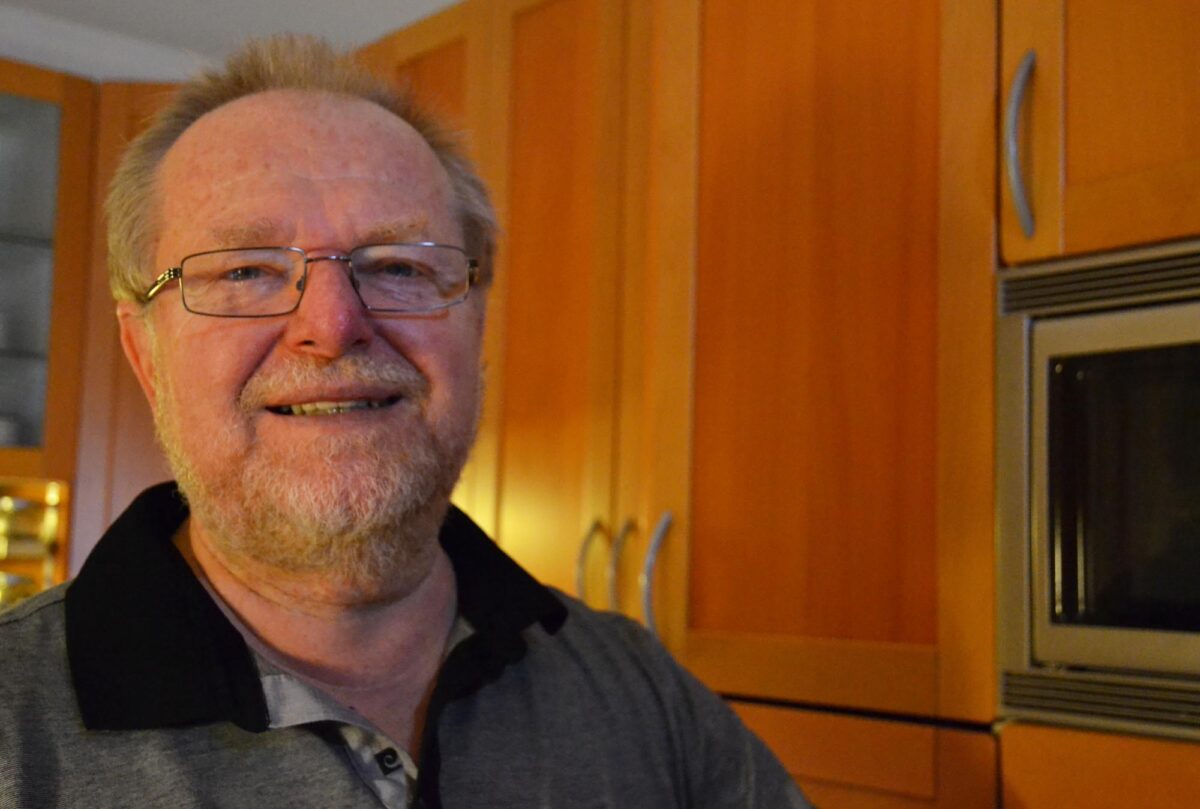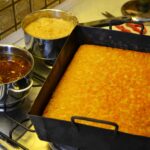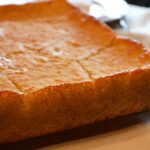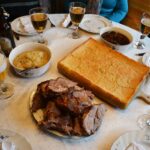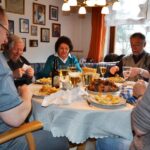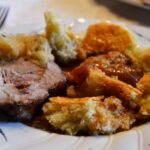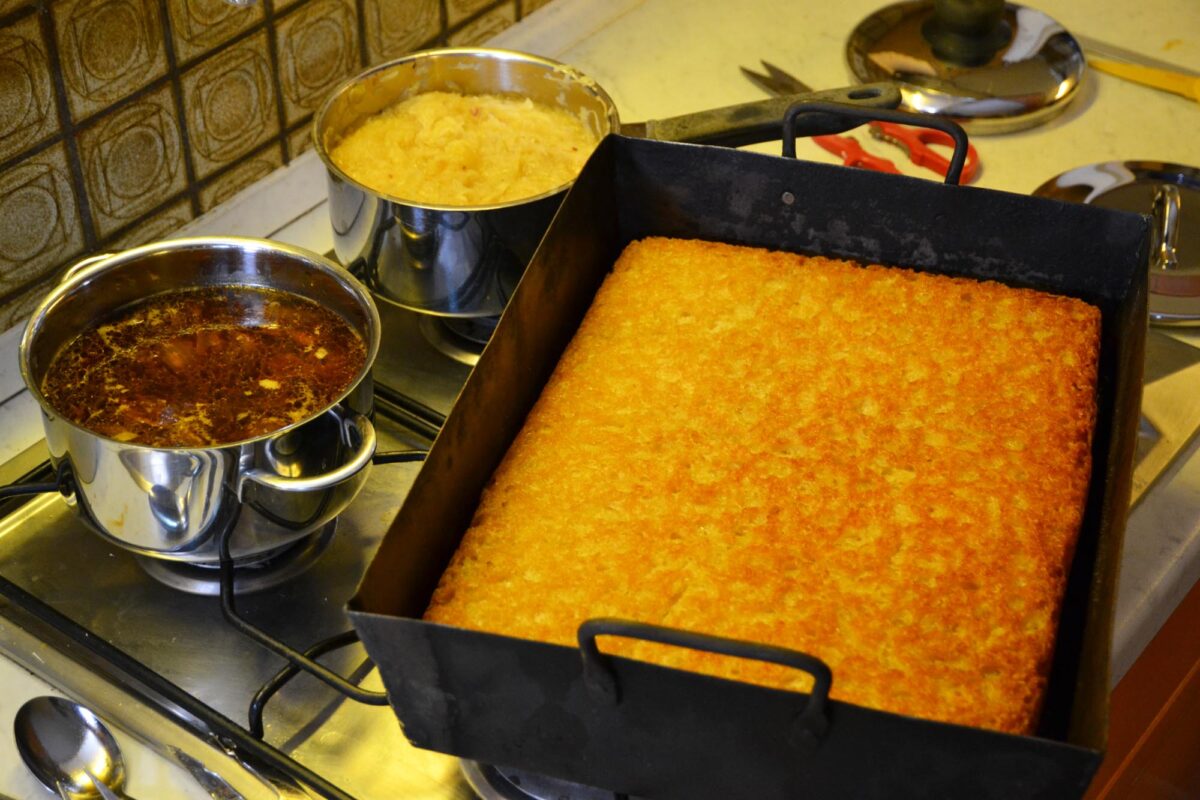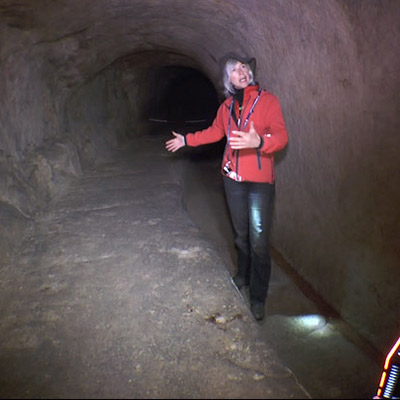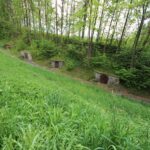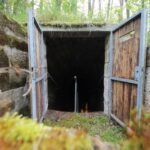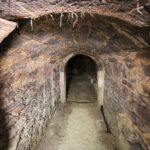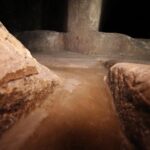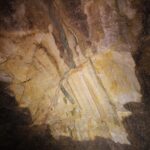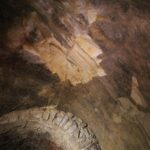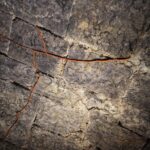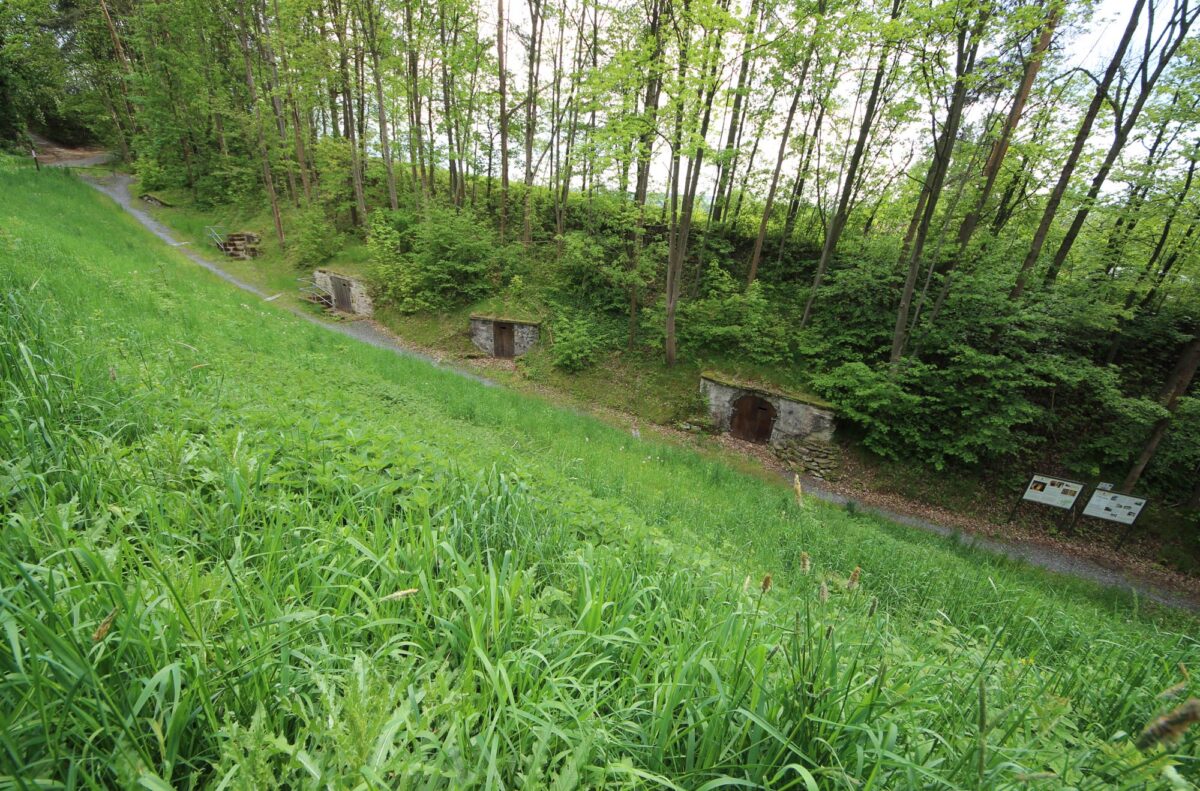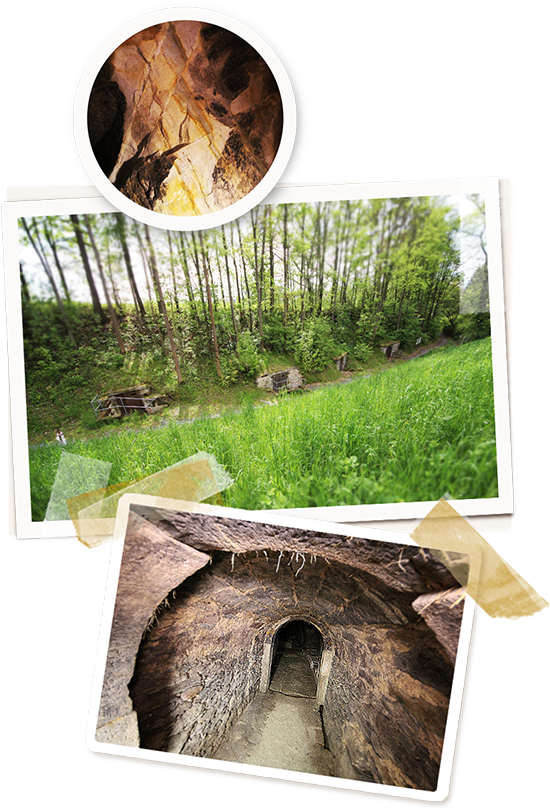
Rock Cellars
Did the miners back then know what they were making visible as they dug cellars into the rock under the town?
Occasionally gold mining stagnated in Goldkronach; when that happened, the miners were instructed to dig cellars, almost as a job-creation measure. The cellars served the town as natural refrigerators.
Their excavations had an amazing result: Today, the Kellergasse offers a unique tour through geological history. Directly at ground level, millions of years of evolution are only a few meters apart in the Franconian Faultline.
The Franconian Faultline’s 200m high breaking edge shows the force with which the continents of Africa and Europe collided long ago.
The QR–Tour examines various aspects of the rock cellars: the geological features, the storage of beer and food in the cellars, and, as a special treat, try out a recipe of a culinary specialty from Goldkronach.
Kellergasse
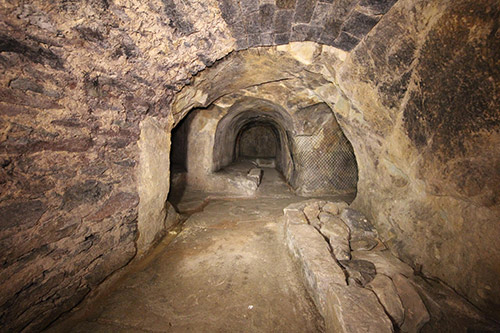
The Franconian line is a globally significant geological formation and runs right through the village.
In many cellars of the town extraordinary rock formations can be seen; the tectonic movements have shaped the landscape around Goldkronach for millions of years.
The Franconian Line
The collision of the African plate with that of Europe took place between 135 and 20 million years ago. Movements of the earth’s crust caused volcanoes to form, the earth to shake, and immense masses of rock to push up against each other.
In southern Europe, huge mountains –the Alps – arose. In our region, a steep drop came about. An old fracture edge dating from millions of years before was activated again. This and the structure and strength of the existing rocks stopped the area from being folded by the action of the southwest rock pressure. Instead there was a deferment and breakage into individual floes, which in turn shifted against each other and were raised and lowered.
The Franconian Line is therefore the fault line between the old mountains and the southwest lying (younger) land from Trias times.
This line is one of the major fracture zones in Central Europe and can be seen above ground as a distinctive step in the landscape of the Bavarian Forest to the northern tip of the Thuringian Forest.
Today this up to 200m high escarpment can be seen from Goldkronach in the direction of Wirsberg. It testifies to the power of the continental collision.
Throughout Goldkronach you can find in-depth knowledge about this geological feature: at the museum, at the Info House and on detailed information panels along a geological nature trail.
In the Felsengasse of Goldkronach you can embark on a unique journey through millions of years. In other locations, you’d have to travel down far in order to experience different geological eras. Here, in the Felsengasse, you have access at ground level. From one cellar to the next, you will find yourself in a different geological time.
Goldkronach offers guided tours through the earth’s history upon request: Annette Taubenreuther is a Geopark Ranger from the Geopark Bavaria-Bohemia and leads various visitor tours in and around Goldkronach to culturally and geologically interesting sites.
How request?? 09273-9840
Sources: Dieter Herrmann, Dr. Joachim Nedvidek, Annette Taubenreuther
The rock cellars of Goldkronach
The Goldkronach rock cellars are also worth seeing for another reason:
Previously they were used as natural refrigerators for storing beer and food. Consistently low temperatures of 8 ° – 12 ° C were ensured throughout the year. Ice was knocked out of frozen ponds in winter and created even lower temperatures until the next autumn. The cellars were carved from the stone using local mining knowledge. There are skillful design solutions, such canals to drain the melting ice water.
Changes in the beer production process occasioned the construction of the cellars. A 1549 beer recipe from Schwandorf proves that the local brewers adapted this innovation. Gradually there was a change from a warm to a cooler fermentation process, which created a more pleasant taste and a beer which could be stored for much longer.
The temperature in this new fermentation process must not exceed 10 degrees Celsius. In the rock cellars, those conditions were met.
In Franconia, cellars always have been a high priority due to the large density of breweries. Many new rock cellars were carved in the 1850s.
Where the rock layers allowed it, individuals or so-called “Cellar Cooperatives” built cellars outside the villages. Small forests were a preferred location, where in the summer the shade of trees could also help to reduce the soil temperature. For this reason, restaurants or beer gardens were often created in close proximity to rock cellars, which enjoyed great popularity. In Franconia, in the summer you can still go “onto the cellar”, sitting above the beer cellar under shady trees and enjoying a beer with a snack.
Today, many abandoned cellars serve as nature conservation habitats, as they provide winter accommodation and cover for protected species such as bats.
The Art of “Peasant Food”: Zutenhefeklöße
There are few towns that can claim a culinary specialty exclusively for themselves. Goldkronach has this disctinction with the Zutenhefeklöße — yeast and potato dumplings. And they are, strictly speaking, not even dumplings – with the round Bavarian or Frankish dumplings the Zutenhefeklöße have optically absolutely nothing in common. Instead, these dumplings are baked as a loaf and then torn into strips. Their preparation from potato and dough is unique, too: originally a ‘peasant food’, their creation is a result of expensive flour being stretched with local potato. The simplicity of preparation is surprising.
And one last curiosity: These dumplings are eaten both hot – with ribs and sauerkraut – or cold, sprinkled with powdered sugar, with coffee. The sweet variation is made with boiled potatoes instead of raw.
This crispy side dish is still the meal of choice on Christmas Eve in many Goldkronach families.
Paul Hofmann from the village Goldmühl prepared Zutenhefeklöße for his friends and for the QR-Tour. Here is his traditional family recipe:
RECIPE Zutenhefeklöße (Ingredients for 6 – 8 people):
8 large uncooked potatoes
750 g wheat flour
1 tablespoon salt
3 packs of dry yeast
120 – 150g clarified butter
Preparation:
Peel and grate the raw potatoes. Mix flour with salt and dry yeast. Add the potato mass to the flour and mix to a dough. Melt the clarified butter in a deep baking pan. Distribute the dough in the pan with a large spoon. Let the dough rise for 2 hours in a warm place.
Bake in the oven at 180 ° for about 60 minutes until crispy. Turn once in the pan and bake for another few minutes. While still hot, tear the loaf into pieces and serve with roasted pork and sauerkraut.
Leftover Zutenhefeklöße can be dusted with plenty of icing sugar and served cold with coffee.
Annette Taubenreuther
… is a newcomer to the area and has since become a convinced “New Upper Franconian”. Her work as a freelance designer in Goldkronach fostered her interest in the history and geology of the area and inspired her to train as a Geopark ranger for the Geopark Bavaria–Bohemia.
“I‘m very happy to live in the heart of historic gold mining and love my immediate surroundings. My geological, cultural and historical tours give me the opportunity to share with other people the wonderful landscape of Goldkronach at the foothills of the Fichtelgebirge. My guests are always thrilled by our landscape.”
Here, the Geopark ranger Annette Taubenreuther explains the original use of the rock cellars.
English Version: Catriona Gallo
Rock Cellars
The Franconian Faultline
A short documentary on how one of the most important European faultlines came about.
A short extract from the film ‘Gold im Berg’,
produced by Arcadia Productions, 2008
A small selection of photos of the Cellars, inside and out.
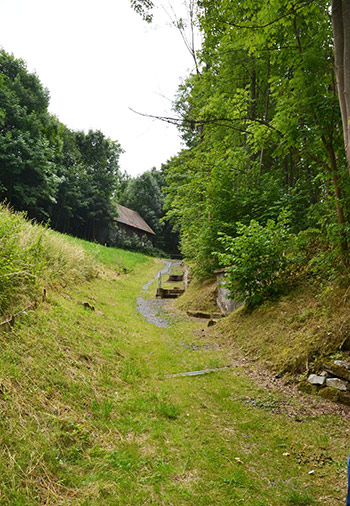 Travel Diary 2014
Travel Diary 2014
Walking up the path to the Felsenkeller I’m transported back in time.
The sudden change from town architecture, cars and busy people to a side lane with chopped wood piles, bird songs and the gentle breeze rustling through the trees.
Walking along the path you suddenly see tiny hobbit like holes in the side of the hill, unique buildings that burrow deep within.
The underground mazes are surrounded by trees, grass and birds, sloping hills with tiny wooden doors in small stone entrance ways.
An entrance to a hidden part of the world, hidden parts of a time since past.
 Chris Rudman
Chris Rudman
Magazine Editor, Author, Manchester




